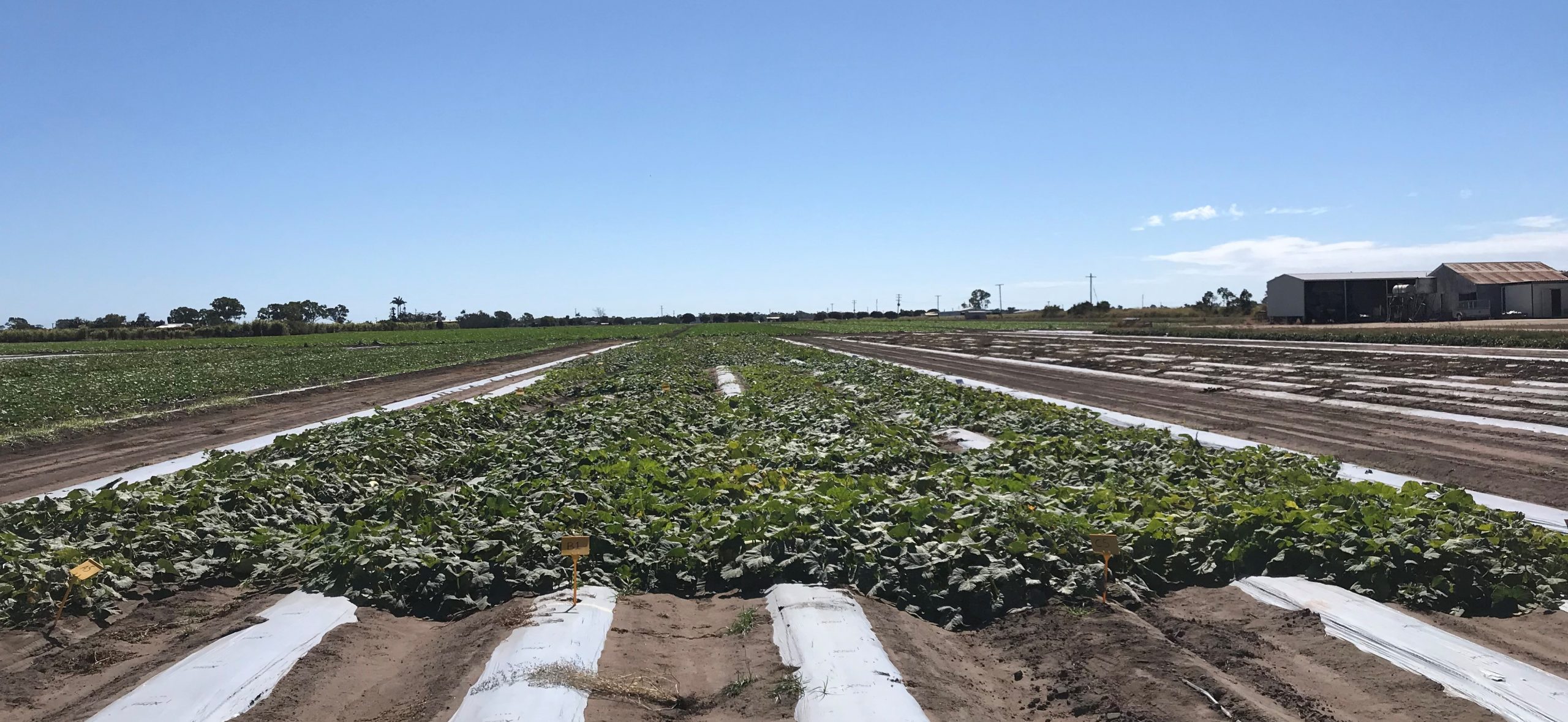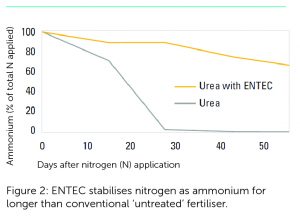
Challenging year sees vegetable exports dip 6.6 per cent
18 September 2020
Pathogen persistence on leafy vegetables
18 September 2020Horticulture crops need nitrogen (N) to consistently produce high yielding and exceptional quality crops. The challenge is to select a nitrogen fertiliser product that will reduce risk, improve nutrient use efficiency, optimise production, and benefit quality. Incitec Pivot Fertilisers Technical Agronomists Conrad Leeks and Rob Dwyer report.
Fertiliser product choice starts with understanding the N cycle and potential losses (see Figure 1). N in fertiliser, crop residues, manure or compost, is transformed by soil microorganisms either into an organic form (soil organic matter) or a plant-available form (nitrate).
Over time, any N immobilised into organic matter can become plant-available later. This is only a temporary loss. Two other losses – denitrification and leaching – are more costly.
Nitrate is a plant-available form of N, but it is also the form most at-risk of loss by leaching and denitrification.
Nitrate leaches due to its negative charge. Nitrate, soil colloids and soil organic matter all possess a negative charge, and two negatives cannot attract. There is a fine balance at play here. We need rainfall or regular irrigation to keep the crops productive. However, every time water moves through lighter soils, NO3- moves with it. If nitrate moves beyond the root zone, crops can not access it to grow.
Denitrification occurs in waterlogged soils. The microbes use the oxygen in NO3- as an oxygen supply – producing nitrous oxide along the way. The problem is worse where soils are: compacted or poorly structured; have soil organic matter levels (and therefore high soil microbe populations); or over irrigated.
Figure 1: The nitrogen cycle.
Addressing the issue
To combat the nitrogen challenge, Incitec Pivot Fertilisers has developed ENTEC. This ammonium stabiliser slows the conversion rate of ammonium to nitrate. It works by inhibiting the Nitrosomonas group of soil bacteria, which keeps N in the top soil in the ammonium form (NH4+) for longer. As ammonium it has a positive charge, it will not readily leach through the profile and has zero denitrification loss potential. Crops can still take up N when it is in the ammonium form.
This product also reduces nitrous oxide emissions. In Victorian trials, ENTEC Nitrophoska was shown to reduce the average nitrous oxide N2O emission flux by 69 to 100 per cent compared to traditional fertilisers.
This means it keeps more nitrogen where its most wanted – in the soil and available to the crop.
In a horticulture situation, seedlings or transplants do not use a lot of N during early establishment. Using this product with the base fertiliser helps to reduce these N losses by keeping the N in the more stable and still plant-available ammonium form. As the crop becomes established, there is N available in the root zone for crop uptake.
ENTEC has been shown to be effective in the soil from 4 to 10 weeks. This has been demonstrated in laboratory results in a moist alkaline vertosol soil at 25°C, where 97 per cent of applied fertiliser had converted to nitrate after 14 days without product protection. When it was used, over 70 per cent of the nitrogen was stabilised as ammonium after 50 days.
This is very important for crops grown under irrigation. For example, this blend improved yield for an irrigated broccoli crop where there was crop residue, wet conditions (due to overhead irrigation), compacted soil and warm temperatures.
Using NH4+ stabilisers ensures flexibility regarding timing of application. Fertiliser can be applied early in crop development, without compromising yield N loss potentials. Potentially fewer fertiliser applications are required when using an NH4+ stabiliser, with more N being protected and ‘banked’ in the topsoil. Research has demonstrated that one fertiliser application could be dropped in Victoria due to enhanced N use efficiency.
Find out more
Please contact Conrad Leeks at conrad.leeks@incitecpivot.com.au or 0466 664 026 or Rob Dwyer at rob.dwyer@incitecpivot.com.au or 0428 111 471.
To read an extended version of this article, including a table of statistically significant horticulture crop responses to ENTEC in Australia, please click here.
This article features in the spring 2020 edition of Vegetables Australia. Click here to read the full publication.



